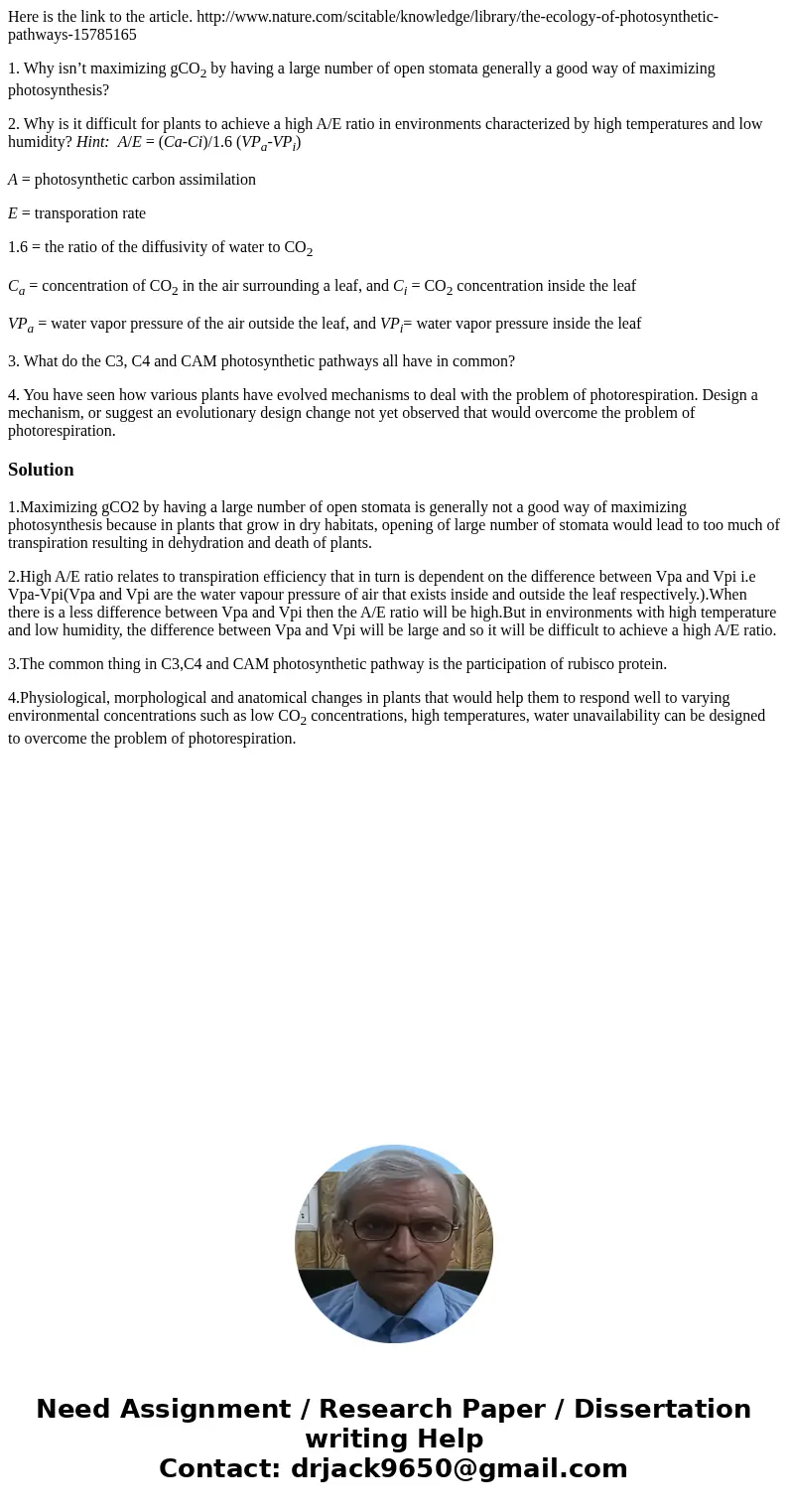Here is the link to the article httpwwwnaturecomscitableknow
Here is the link to the article. http://www.nature.com/scitable/knowledge/library/the-ecology-of-photosynthetic-pathways-15785165
1. Why isn’t maximizing gCO2 by having a large number of open stomata generally a good way of maximizing photosynthesis?
2. Why is it difficult for plants to achieve a high A/E ratio in environments characterized by high temperatures and low humidity? Hint: A/E = (Ca-Ci)/1.6 (VPa-VPi)
A = photosynthetic carbon assimilation
E = transporation rate
1.6 = the ratio of the diffusivity of water to CO2
Ca = concentration of CO2 in the air surrounding a leaf, and Ci = CO2 concentration inside the leaf
VPa = water vapor pressure of the air outside the leaf, and VPi= water vapor pressure inside the leaf
3. What do the C3, C4 and CAM photosynthetic pathways all have in common?
4. You have seen how various plants have evolved mechanisms to deal with the problem of photorespiration. Design a mechanism, or suggest an evolutionary design change not yet observed that would overcome the problem of photorespiration.
Solution
1.Maximizing gCO2 by having a large number of open stomata is generally not a good way of maximizing photosynthesis because in plants that grow in dry habitats, opening of large number of stomata would lead to too much of transpiration resulting in dehydration and death of plants.
2.High A/E ratio relates to transpiration efficiency that in turn is dependent on the difference between Vpa and Vpi i.e Vpa-Vpi(Vpa and Vpi are the water vapour pressure of air that exists inside and outside the leaf respectively.).When there is a less difference between Vpa and Vpi then the A/E ratio will be high.But in environments with high temperature and low humidity, the difference between Vpa and Vpi will be large and so it will be difficult to achieve a high A/E ratio.
3.The common thing in C3,C4 and CAM photosynthetic pathway is the participation of rubisco protein.
4.Physiological, morphological and anatomical changes in plants that would help them to respond well to varying environmental concentrations such as low CO2 concentrations, high temperatures, water unavailability can be designed to overcome the problem of photorespiration.

 Homework Sourse
Homework Sourse